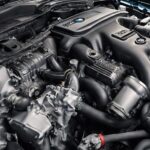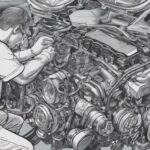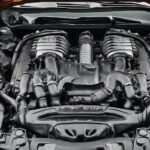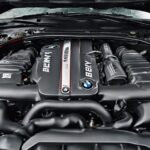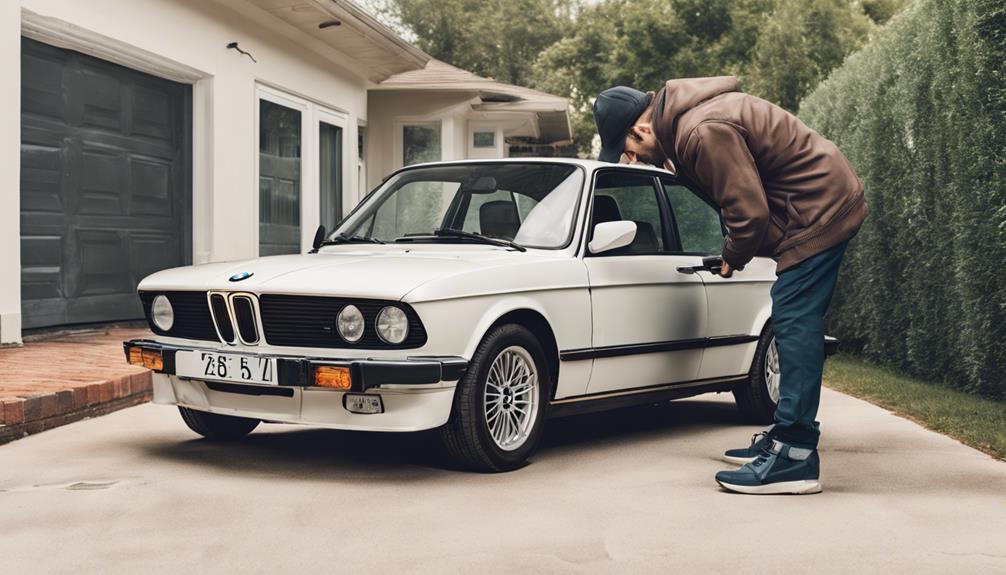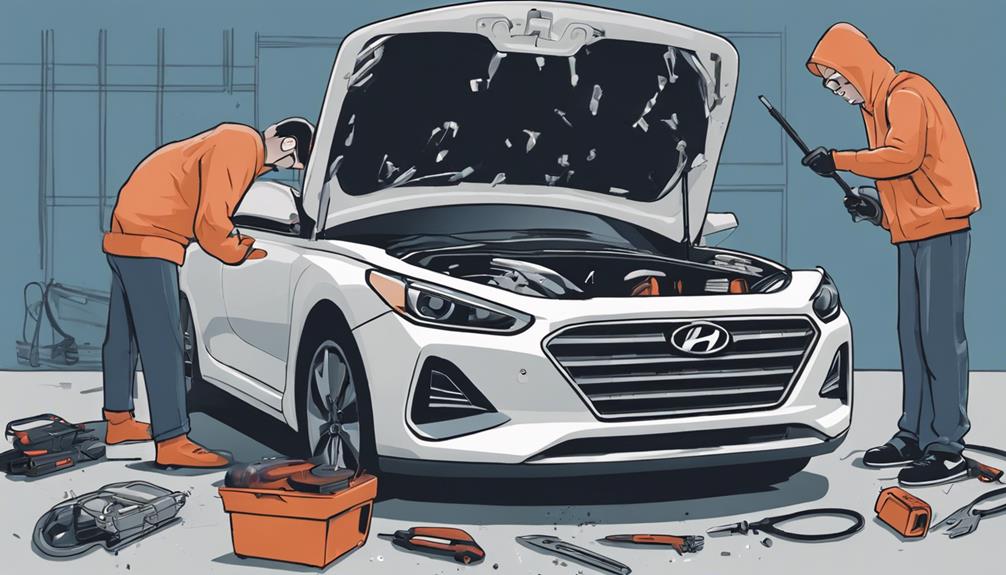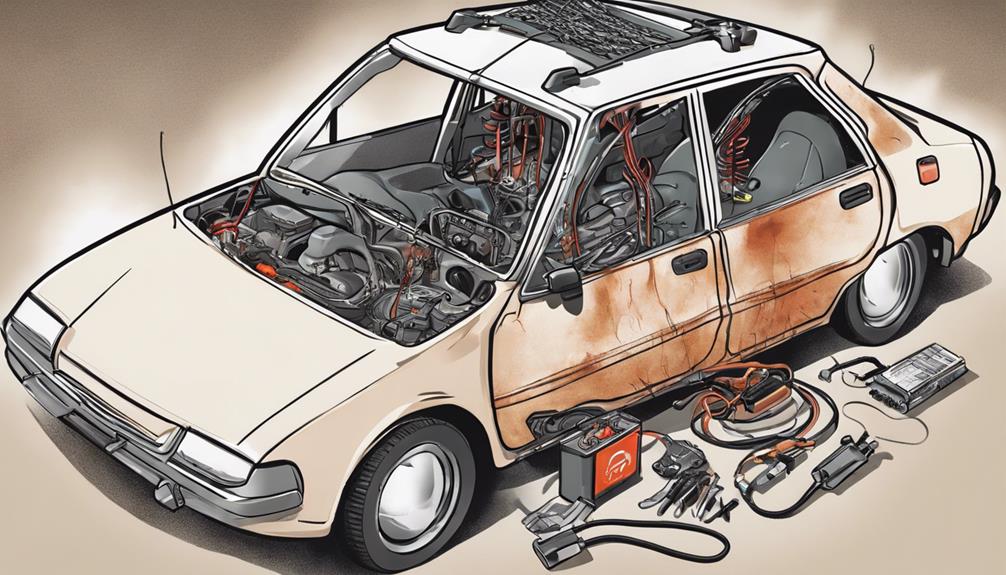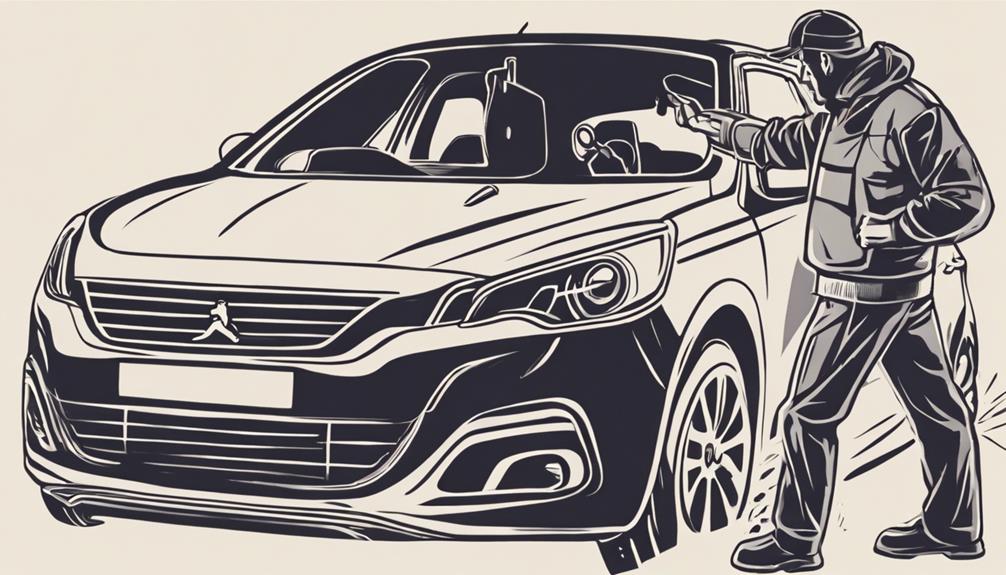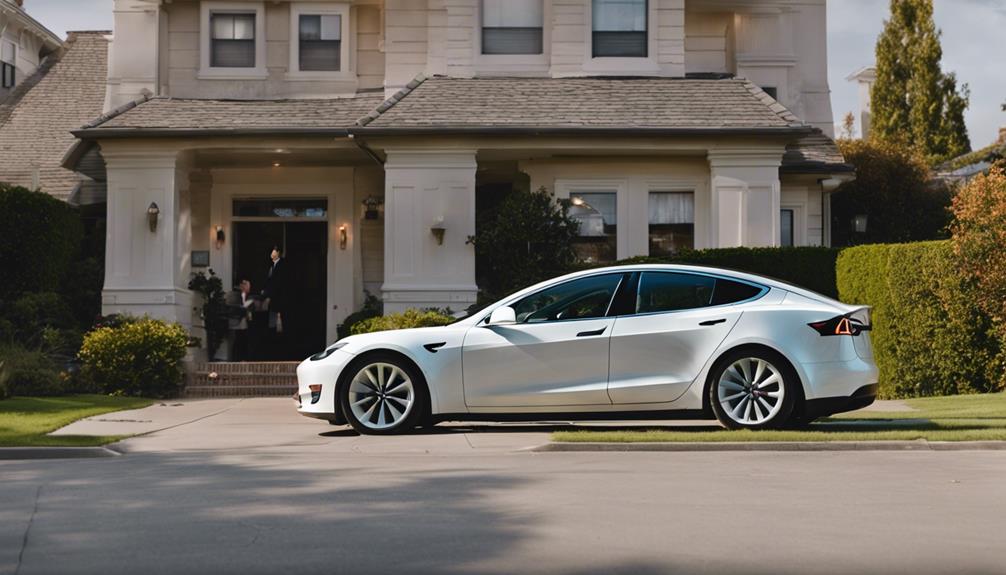If your BMW won't start, low battery voltage may be the culprit, leading to clicking noises; make sure to recharge it. Parasitic draw from aftermarket accessories or a faulty final stage resistor can drain the battery, affecting fan speeds and climate control. Issues with the EWS system could cause starting problems; listen for auditory clues and try different keys to diagnose.
Fuel delivery problems, including clogged filters and fuel pump flaws, may also be to blame. Guarantee proper maintenance to prevent fuel pump failure, but if symptoms persist, diagnostic steps such as scanning for fault codes, checking for spark, and testing fuel pressure may be necessary. Addressing these issues promptly can improve your BMW's performance and prevent further breakdowns subtly revealing more solutions ahead.
Key Takeaways
- Low battery voltage can cause clicking noise; recharge the battery for a smooth start.
- Identify and remove power-draining accessories to prevent parasitic draw and battery drain.
- Check the EWS system for key recognition issues; locate the module beneath the steering wheel.
- Maintain fuel delivery components like filters and injectors; watch for signs of fuel pump failure.
- Timely fuel pump replacement improves performance, fuel efficiency, and prevents starting issues in BMW e46 models.
Low Battery Voltage
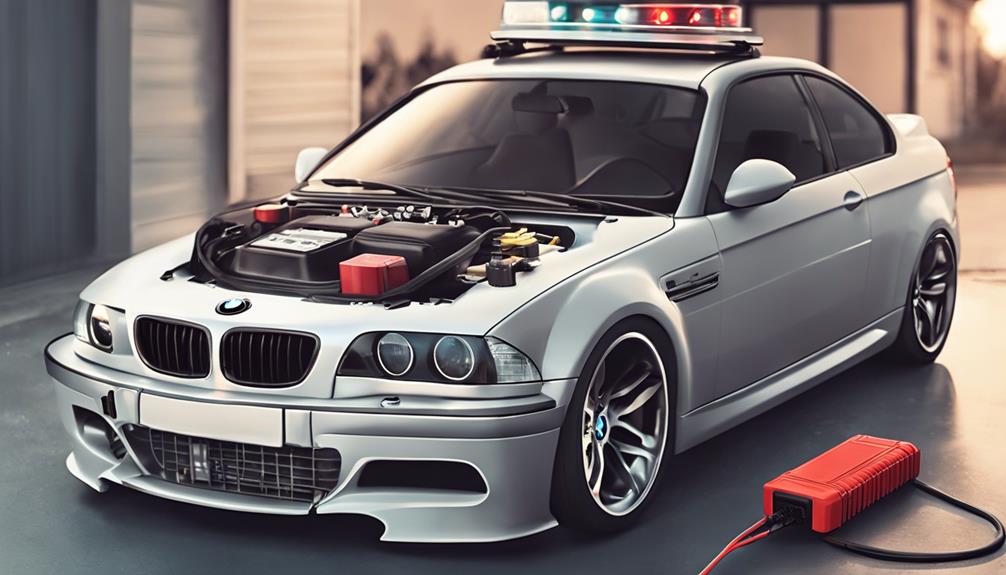
If your BMW e46 is emitting a frustrating clicking noise when you attempt to start it, chances are that the culprit is the low battery voltage. The onboard computer in your stylish ride can help you verify the battery voltage, offering a glimpse into the core of the issue. When the voltage falls below the necessary level, your car turns into a chic but stationary piece of art until the battery gets the recharge it deserves.
The BMW e46, with its impressive battery and numerous electronic features, is a powerhouse that sometimes struggles with voltage problems due to its demanding nature.
To guarantee that your BMW e46 starts smoothly and effortlessly, recharging the battery becomes the savior of the day. After all, a car as advanced as yours deserves to roar to life without any hiccups. Keep that battery voltage up, and you'll be cruising down the road in no time, leaving that clicking noise a distant memory.
Clicking Noise When Starting
Experiencing a distinctive clicking noise when starting your BMW e46 often signals a low battery voltage issue. This common symptom indicates that there isn't enough power to start the car. To confirm the low voltage, you can test the battery using the onboard computer. If the voltage is below the required level, your BMW will not start. Recharging the battery is essential to resolve the clicking noise problem and get your BMW back on the road.
| Symptoms | Solutions |
|---|---|
| Clicking noise when starting | Recharge the battery |
| Insufficient power | Check battery voltage |
| Car not starting | Test using onboard computer |
| Low battery voltage | Confirm with diagnostics |
Parasitic Draw From Accessories
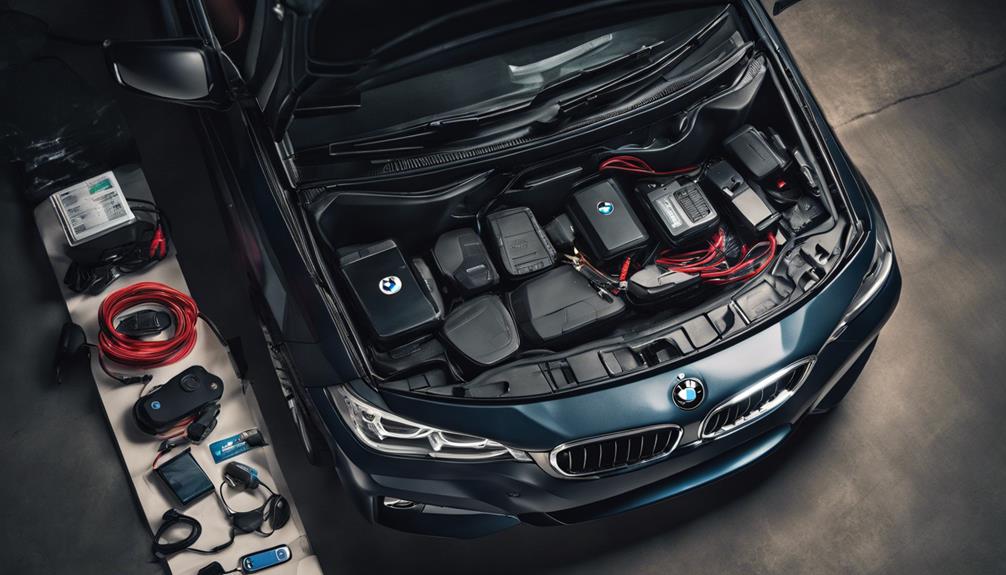
So, you've got some fancy aftermarket gear in your BMW, huh?
Well, those snazzy accessories might be sipping a bit too much juice from your battery, causing a parasitic draw.
Time to play detective and pinpoint which power-hungry gizmo is the culprit, test that battery drain, and zap those electrical drain issues for good!
Identifying Power-Draining Accessories
To pinpoint power-draining accessories causing starting issues in your BMW e46, inspect aftermarket add-ons like amps, radios, and headlights that may be drawing excessive battery power. Here are some tips to help you identify these culprits:
- Check for any recent installations of aftermarket accessories.
- Look for accessories that are left on when the car is off.
- Inspect wiring for any visible damage or incorrect connections.
- Consider the age and condition of the accessories in question.
- Use a multimeter to measure the amp draw of each accessory.
Testing Battery Drain
Uncover the culprit behind your BMW's starting issues by testing for battery drain caused by parasitic draw from aftermarket accessories such as amps, radios, or headlights. To pinpoint the source of the battery drain, start by disconnecting aftermarket accessories and then using a multimeter to measure the current flow when the car is turned off.
Keep an eye out for any abnormal readings that could indicate excessive power draw. Remember, proper wiring of additional accessories is essential to prevent unnecessary battery drain. By identifying and fixing the source of parasitic draw, you can eliminate starting problems and guarantee your BMW is always ready to hit the road.
Don't let battery drain dim your driving experience; take charge and solve the issue proactively.
Resolving Electrical Drain Issues
Investigate the root of your BMW's starting troubles by identifying and rectifying any electrical drain issues stemming from aftermarket accessories like amps or radios. When dealing with parasitic draw problems, keep these points in mind:
- Aftermarket accessories like amps or radios can cause parasitic draw on the BMW e46 battery.
- The final stage resistor in the HVAC system is a common culprit for electrical drain issues.
- Incorrectly wired accessories can lead to unwanted battery drain.
- Identifying the specific accessory causing the draw is essential for fixing the issue.
- Resolving parasitic draw problems involves removing or rewiring the accessory causing the drain.
Faulty Final Stage Resistor
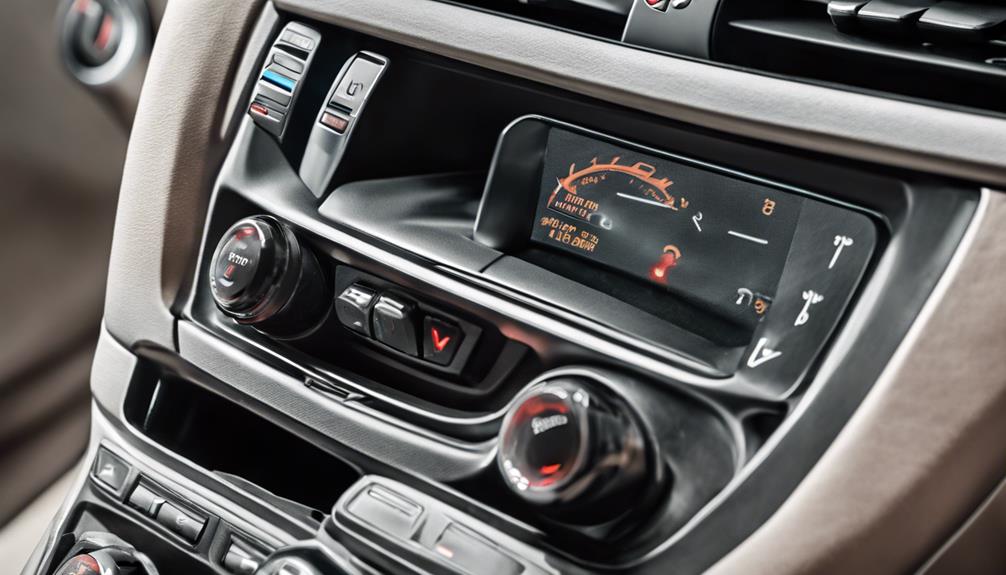
So, your BMW's climate control acting up?
Could be that pesky final stage resistor causing a fuss.
Keep an eye out for issues like fan speed glitches or total airflow shutdown.
Understanding the symptoms and replacement process can help you tackle this HVAC hiccup head-on!
Symptoms of Failure
If your BMW e46 is displaying inconsistent fan speeds or failing to respond to climate control adjustments, a faulty final stage resistor could be the culprit. When it comes to diagnosing issues related to the final stage resistor, keep an eye out for the following signs:
- Inconsistent fan speeds.
- Climate control unresponsiveness.
- Burning smell or smoke from vents.
- HVAC system malfunctions.
- Sudden changes in airflow.
If you notice any of these symptoms, it's advisable to have a mechanic inspect your BMW e46 to confirm whether the final stage resistor is indeed the source of the problem.
Replacement Procedure
To replace the faulty final stage resistor in your BMW e46, start by accessing it behind the glove compartment. This component controls the blower motor speed, essential for your HVAC system to function correctly.
If your car struggles to start, a malfunctioning final stage resistor might be the culprit. Aftermarket parts may not be reliable in this case, so opt for an OEM replacement for peace of mind.
Proper installation is key to getting your HVAC back in working order, ensuring you can start your car without any issues. By addressing this issue promptly, you can enjoy a comfortable ride with a fully functional heating and cooling system.
Issues With the EWS System
Exploring the intricate workings of your BMW's EWS system will reveal potential causes behind a stubbornly inactive engine. Here are a few insights into the issues that may arise with the EWS system:
- Ever-changing Codes: The EWS system in BMW e46 models alters codes with every lock/unlock cycle to deter theft.
- Key Recognition Problems: If your car fails to recognize the key, it could signal an underlying problem with the EWS system.
- Auditory Clues: A beep when inserting the key is a good sign of the EWS system functioning correctly.
- Key Testing: Trying to start the car with a different key can help determine if the EWS system is recognizing keys properly.
- Location Matters: Typically, the EWS module in BMW e46 models resides beneath the steering wheel.
Understanding these aspects of the EWS system can assist you in diagnosing potential issues with your BMW's starting troubles.
Fuel Delivery Problems
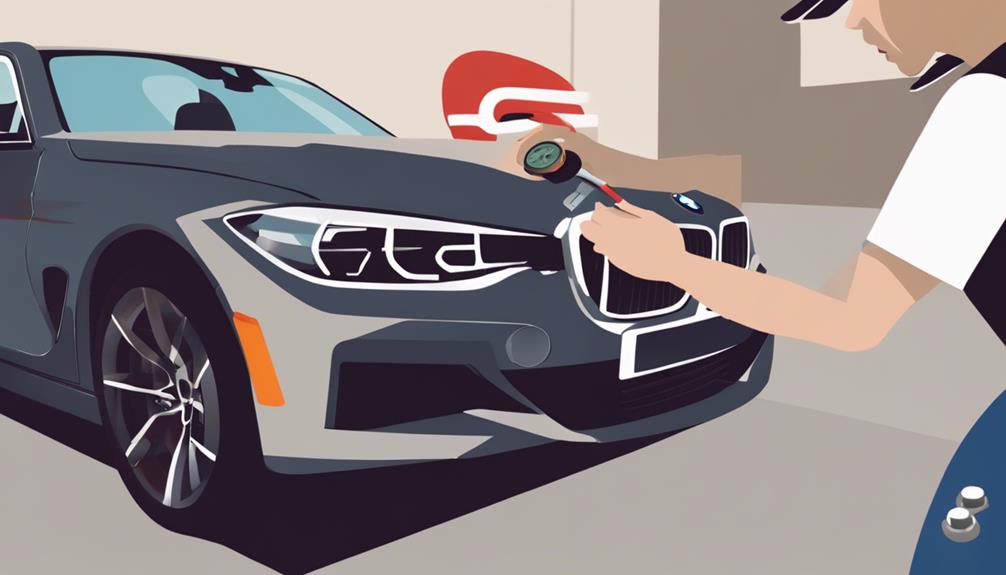
Exploring the domain of fuel delivery issues reveals essential insights into why your BMW may be refusing to start. A common culprit in such scenarios is a clogged fuel filter. This sneaky component can hinder fuel flow, leading to starting problems. It's vital to stick to the recommended schedule of replacing the fuel filter every 15,000 miles to guarantee your BMW's engine receives the fuel it needs to roar to life effortlessly.
If you suspect a fuel delivery issue, using a fuel injector cleaner can help diagnose the problem. This handy product can clear out any gunk obstructing the fuel flow, potentially resolving your starting woes. Additionally, some BMW models come equipped with a fuel pump regulator that, if faulty, can disrupt the proper delivery of fuel to the engine, causing starting issues.
Fuel Pump Design Flaws
Looking under the backseat of your BMW e46 model reveals a design flaw that affects many owners – the exposed position of the fuel pump. This flaw can lead to premature failure and starting issues. Here's what you need to know:
- Vulnerability: The fuel pump in BMW e46 models is located under the backseat, making it susceptible to damage from objects or liquids that may enter the cabin.
- Accelerated Wear: Low fuel levels can speed up the wear and tear on the fuel pump, increasing the likelihood of malfunctions.
- Symptoms: Keep an eye out for signs such as sputtering, stalling, and the engine bogging down, which could indicate a failing fuel pump.
- Diagnosis: Listen for a humming sound coming from the fuel pump when you turn the key, as this could help you determine its condition.
- Solution: If you suspect a faulty fuel pump, consider replacing it to prevent future starting problems and maintain the smooth operation of your BMW.
Diagnostic and Repair Steps
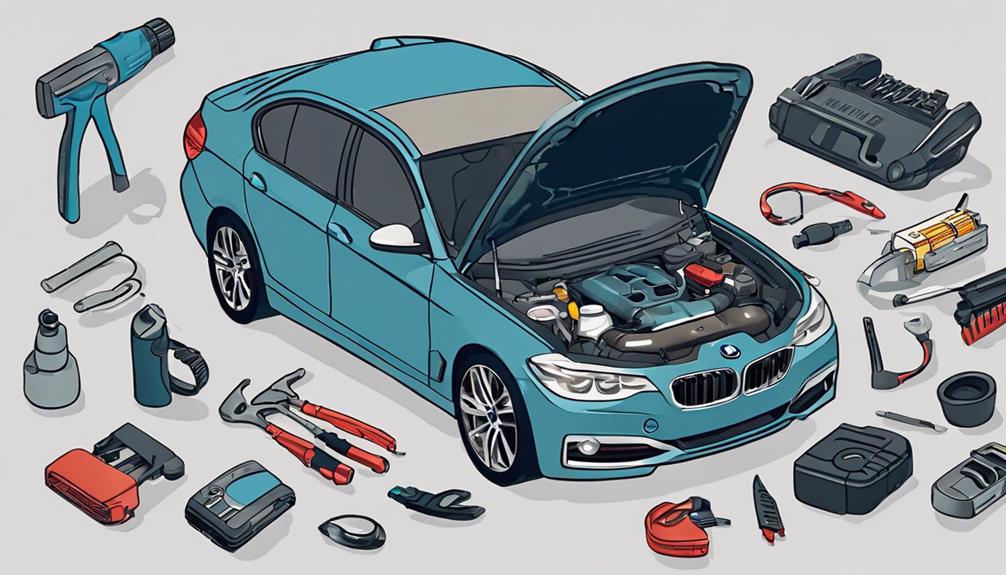
For effective troubleshooting of your BMW's starting issues, start by utilizing a diagnostic tool to scan for fault codes in the vehicle's computer system. This handy tool can provide valuable insights into potential problems that may be causing your car not to start.
If everything looks good on the diagnostic front, it's time to get hands-on. Check for spark by removing a spark plug and observing for a healthy spark. No spark? Time to investigate further. Test the fuel pressure using a gauge to confirm that fuel is being delivered properly to the engine. A lack of fuel could be the reason behind your car's refusal to start.
Next, inspect the ignition system components such as the coils, spark plugs, and ignition module for any faults. These parts play an important role in getting your engine up and running.
Frequently Asked Questions
How Do You Fix an Engine That Wont Start?
When an engine won't start, check the battery, look for parasitic draws, test the key recognition, inspect the fuel system, and listen for pump noises. These steps can help diagnose and fix the issue efficiently.
Why Is My Car Not Doing Anything When I Try to Start It?
When your car doesn't respond at all when you try to start it, check the battery, fuses, and connections. A lack of power can cause this issue. Don't hesitate to seek professional help if needed.
Why Is My Car Not Starting Suddenly?
When your car doesn't start suddenly, it could be due to a variety of issues like low battery voltage, parasitic draws, EWS system problems, or fuel delivery issues. Identifying the root cause is key.
How Do I Get My BMW to Start?
To get your BMW to start, check the battery voltage and remove any aftermarket accessories causing power drain. Test the EWS system with another key and inspect the fuel filter for clogs. Listen for issues with the fuel pump.

